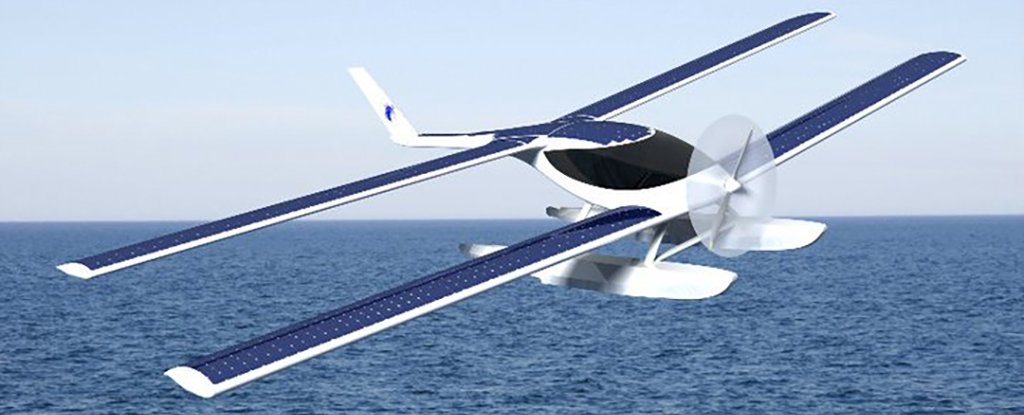
A new plane powered solely by biofuels and solar energy is about to make the first zero-carbon-emission flight across the Atlantic Ocean. Seven years in the making, the ‘Eraole’ has been developed by French pilot, scientist, and entrepreneur, Raphaël Dinelli, and is set to make its maiden journey in June.
The super-lightweight aircraft is powered by solar cells built into its wings, and when the Sun goes down, an algae-based biofuel can drive the engine instead. And they won’t have to work that hard – around 20 percent of the Eraole’s power comes from simply gliding through the sky. Dinelli’s alternative energy company, Laboratoire Océan Vital, is responsible for constructing the revolutionary machine.
When it comes to actually flying the aircraft, Dinelli will have a number of challenges to deal with: a cramped cockpit (to keep the weight of the aircraft down); a non-pressurised cabin (to reduce the drain on its energy sources), which means he’ll be on 30 percent less oxygen than normal; and a 60-hour flight time with no autopilot available.
Being a veteran of solo sailing voyages should give Dinelli some useful experience to draw upon, however.

A typical round-trip flight from New York to Europe releases 2-3 tons (1.8 to 2.7 tonnes) of carbon dioxide per person, reports The New York Times, and the journey about to be undertaken by the Eraole is designed to act as a wake-up call to the environmental consequences of air travel.
If you take several long flights a year and don’t do much driving, it’s likely that the biggest part of your carbon footprint comes from the time you spend in the air.
Small lithium-ion batteries are included in the plane to add some extra thrust during take-off, but after that, the aircraft should run on solar power for some 25 percent of the time its airborne. With gliding accounting for 20 percent of the trip’s duration, that leaves 55 percent for the biofuel – Dinelli and his team have spent two years finding the best biofuel engine for the task.
With a cruising altitude of 10,000 feet (609 metres) and a top speed of 100 km/h (about 62 mph) the Eraole won’t be winning any speed races any time soon – a commercial passenger jet could complete the journey in a tenth of the time – but it might just spark a renewable energy revolution in the field of aviation.
“People investigating non-carbon flight are no longer seen as a bunch of eccentric dreamers,” Dinelli told CNN. We can’t wait to see it fly.